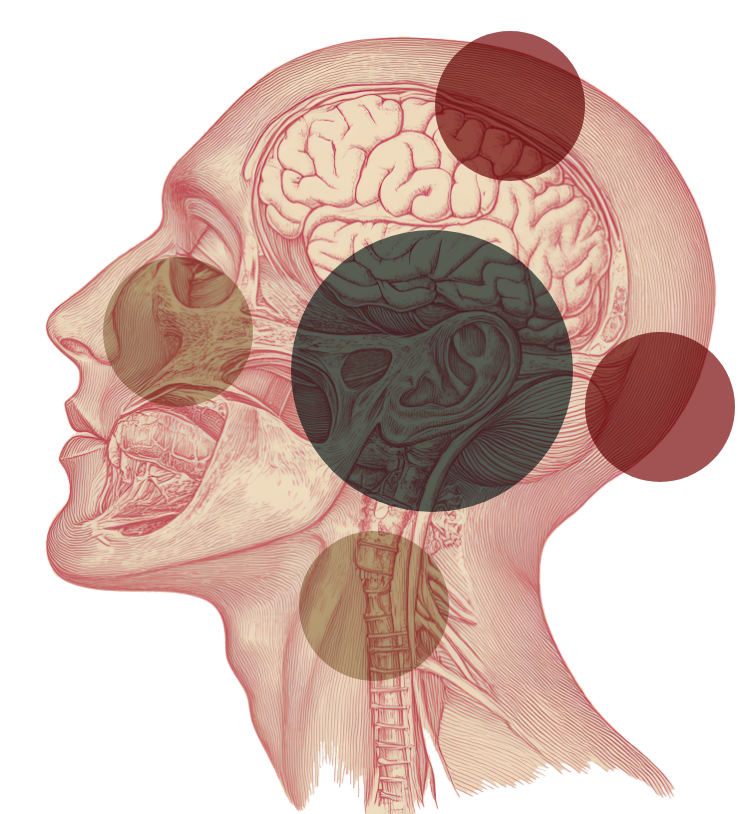
What are ear tubes and what is their role?
Ear tubes are very small plastic devices placed in an artificial opening in the eardrum. Their role is to ventilate the middle ear. Some individuals (both children and adults) accumulate fluid in the middle ear behind the eardrum. This is very common in young children but can also occur in adults. The exact causes of this condition are still not fully known. A large number of children will develop fluid in the middle ear at some point, but this does not always cause problems. Treatment is needed only if it affects hearing or speech, or causes recurrent ear infections.
The tubes usually remain in the ear for six to twelve months or a bit longer and are expelled naturally as the eardrum grows. The expulsion often goes unnoticed.
Does my child need ear tubes?
The fluid in the ear usually goes away on its own, but it can take time. Generally, surgery is not considered within the first three months after diagnosis because about half of these children improve on their own during that time. After three months, the child should be re-examined to decide if further treatment is necessary.
If the fluid is causing hearing, speech, or frequent ear infections, then tube placement is recommended. However, even after placement, fluid may return once the tubes fall out. This happens in one in three children, in which case reinsertion of tubes may be needed until the child grows older and the problem resolves naturally.
Are there alternative solutions?
Some doctors may initially suggest using nasal drops or sprays to see if they help. These can be effective if the child tolerates them. Antibiotics and antihistamines generally do not help.
Removal of the adenoids (adenoidectomy) may also help, and the ENT doctor may perform this simultaneously with the insertion of ear tubes.
Hearing aids can also be used to address hearing or speech issues caused by middle ear fluid.
Can I do something to help my child?
Yes. Speak clearly and wait for your child to respond. Make sure they are looking at your face when you speak.
Call your child by name to get their attention before you start talking.
Inform teachers or caregivers that your child has hearing difficulties and ask for them to sit near the front of the class, close to the teacher.
What happens after the surgery?
Usually, there is no pain after ear tube insertion. If there is, give your child a simple pain reliever.
Your child’s hearing often improves noticeably almost immediately. Some children may feel that sounds are too loud until they adjust to normal hearing again — this can take a few days. Your child can return to school or daycare the day after surgery.
What about ear infections and the tubes?
Most people with ear tubes do not get infections. If you notice yellowish discharge from the ear, this may indicate an infection. In this case, contact your doctor, who will usually prescribe antibiotic ear drops for a few days. Oral antibiotics (pills or syrups) are usually not helpful.
Can my child swim with ear tubes?
Yes, your child can start swimming about two weeks after surgery. Earplugs are usually not necessary. The hole in the tube is too small to let water through. What can let water through is pressure changes from diving, so diving or submerging the head forcefully is not allowed.
Avoid getting dirty or soapy water in the ear. For baths or showers, earplugs should be used.
What else should I know about ear tubes?
There are no issues with flying. If the tubes are in place and not blocked, changes in air pressure on planes will not cause pain.
A hearing test (audiogram) is needed a few days after surgery to confirm hearing levels.
Sometimes, after the tubes come out, a small hole (perforation) may remain in the eardrum. This usually heals on its own. If it does not and causes problems, surgery may be required later.
Ear tubes may leave a small scar on the eardrum. This does not affect hearing.